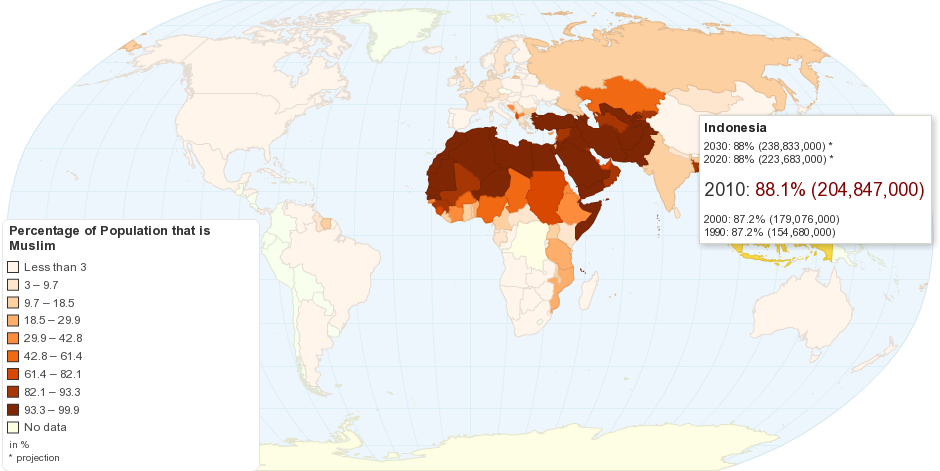This map shows current Muslim population in the world.
- Percentage of 1990 world population that is Muslim: 19.9% (1,050,963,000 people)
- Percentage of 2000 world population that is Muslim: 21.6% (1,320,693,000 people)
- Percentage of 2010 world population that is Muslim: 23.4% (1,619,314,000 people)
- Projected Percentage of 2020 world population that is Muslim: 24.9% (1,913,499,000 people)
- Projected Percentage of 2030 world population that is Muslim: 26.4% (2,190,154,000 people)
The current population data that underpin this report were culled from the best sources available on Muslims in each of the 232 countries and territories for which the U.N. Population Division provides general population estimates.
2010 Key findings:
- Sunni Muslims will continue to make up an overwhelming majority of Muslims in 2030 (87- 90%).
- About three-quarters of the world's Muslims (74.1%) live in the 49 countries in which Muslims make up a majority of the population.
- More than a fifth of all Muslims (23.3%) live in non-Muslim-majority countries in the developing world.
- About 3% of the world's Muslims live in more-developed regions, such as Europe, North America, Australia, New Zealand and Japan.
- Fertility rates in Muslim-majority countries are closely related to women's education levels.
- In the eight Muslim-majority countries where girls generally receive the fewest years of schooling, the average fertility rate (5.0 children per woman) is more than double the average rate (2.3 children per woman) in the nine Muslim-majority countries where girls generally receive the most years of schooling.
- Fewer than half (47.8%) of married women ages 15-49 in Muslim-majority countries use some form of birth control. By comparison, in non-Muslim-majority, less-developed countries nearly two-thirds (63.3%) of all married women in that age group use some form of birth control.
Note: Data from The Pew Forum on Religion & Public Life: The Future of the Global Muslim Population: Projections for 2010-2030.
15 years ago

